My grandmother had a cold frame. It was a long rectangular box angled to catch the sun with a sliding glass top, located along the south wall of the garage. At the time I didn't know what it was, but now I've built one of my own, just outside my kitchen, made of weather-resistant cedar, Plexiglas and an automatic opener device that levers the top up when temperatures reach about 50 degrees.
Here in Vermont, it's too cold and the days are too short in December to think about cold frame propagation, but I can still organize my shopping list as seed catalogs have started to arrive in my mailbox. Sometime in late January I'll begin to test the soil to see if it's ready for some arugula. If you're gardening in a warmer zone, you'll be able to sow seeds a little earlier as weather allows.
Gardening under glass is nothing new. From bio-domes to conservatories to commercial greenhouses, large-scale plant propagation happens year-round in heated facilities designed to maximize the sun's energy. The lucky homeowner with a greenhouse can overwinter tender plants and start new plants for setting out once frost has passed. But cold frames offer an affordable alternative to a greenhouse. They're easy to build as a DIY project with recycled bricks, lumber and old windows, or cobbled together with other repurposed materials, and can be found as kits or even bought from manufacturers and professionally installed.
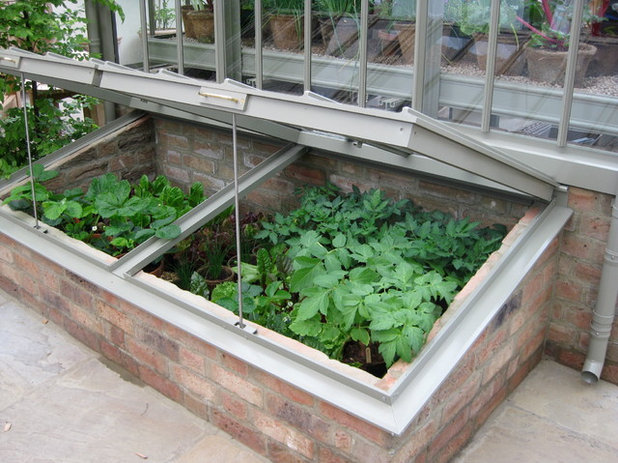
Paintbox Garden
Cold Frame ComponentsThis is the gold standard of cold frames (photographed in London at the Chelsea Flower Show). Made of powder-coated aluminum by Alitex, one of England's premier greenhouse manufacturers, it's built to last for generations with a mortared brick base.
If you have a greenhouse, a cold frame sited to take advantage of sunlight on a south-facing wall is ideal for hardening off seedlings before transplant. Pots or trays can be placed inside, with the glass top supported by metal rods during the day and closed at night for protection.
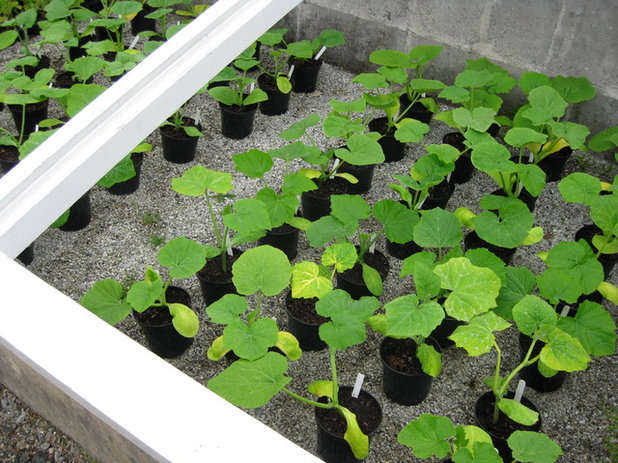
Paintbox Garden
While touring estates and public gardens in England, I had the opportunity to visit Heligan in Cornwall and took this photo just before crews moved the healthy squash starts into prepared beds in the walled kitchen garden.
This cold frame has a gravel base so it's used almost exclusively for transplanting purposes. Propagation is done in the heated greenhouse, where conditions can be kept sterile.
If you propagate with a light stand indoors, trays full of seedlings can be moved to a cold frame for about a week before transplanting once the threat of frost has passed.
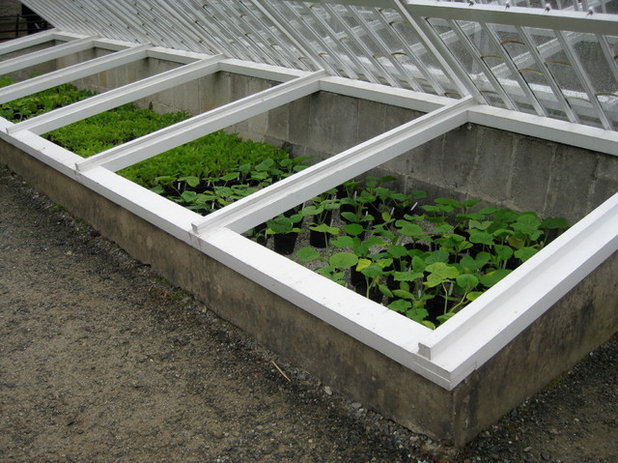
Paintbox Garden
Here's another view of the structure. You can see it has a concrete base and painted wood framework with a custom glass top. The young plants were pulled from the warm comfort of the heated greenhouses by the horticultural staff on a mild spring day, to be exposed to several days of cool weather, wind and rain before being moved.
In this case, the cold frame plays a crucial role in the garden scheme as a layover for tender starts.
Note the slanted top, which allows water to drain away and optimizes solar gain.
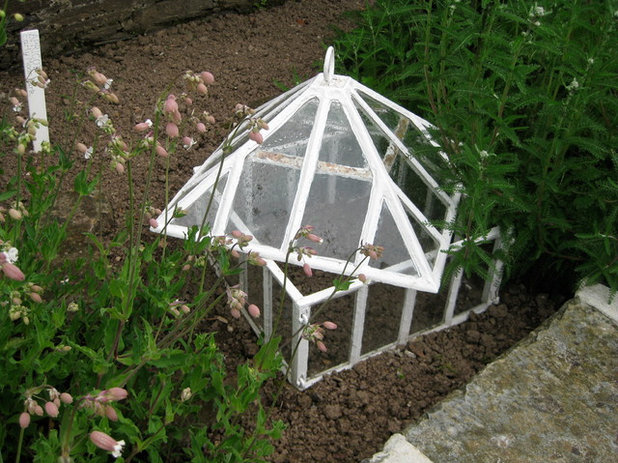
Paintbox Garden
This is another type of cold frame, an elegant little conservatory of sorts, made of glass and metal with a quaint removable lid that allows air to circulate around transplants or new seedlings when weather remains unpredictable — absolutely charming, very British!
Glass cloches offer similar protection — they're large domes that are placed over seedlings at night during the spring chill. You can find these in antique markets and upscale garden shops — or maybe your grandmother has a few lying around the tool shed.
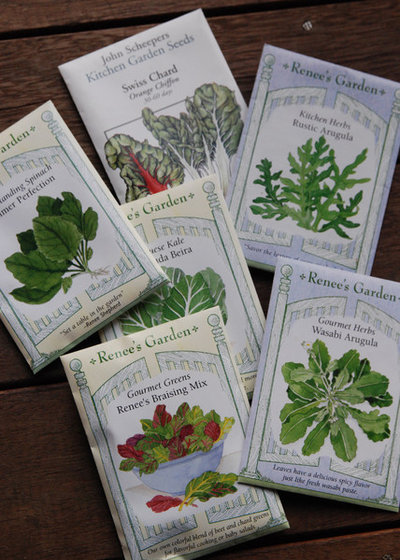 Growing Edibles
Growing EdiblesIf your cold frame will be used for active propagation, be aware that many edibles dislike transplanting — particularly tap-rooted crops like carrots and beets, which are best grown in situ and sown directly into garden beds.
Greens rich in antioxidants, vitamins and minerals — like arugula, kale and chard — are all good candidates for sowing in batches every few weeks once soil temperatures reach about 50 degrees Fahrenheit (use a soil thermometer to check).
Here are some I've ordered through John Scheepers and Renee's, which I'm excited to try, particularly the arugula with its delectable bite.
Success with growing edibles in a cold frame depends on soil temperature, which is widely variable depending on where you live. Get organized in December and start to measure your soil temperature in January, testing every two weeks. Seed packs have planting instructions, usually saying "sow as early as soil can be worked" in early spring, meaning the ground isn't frozen.
Don't have a soil thermometer? Get one at your garden center or order online.
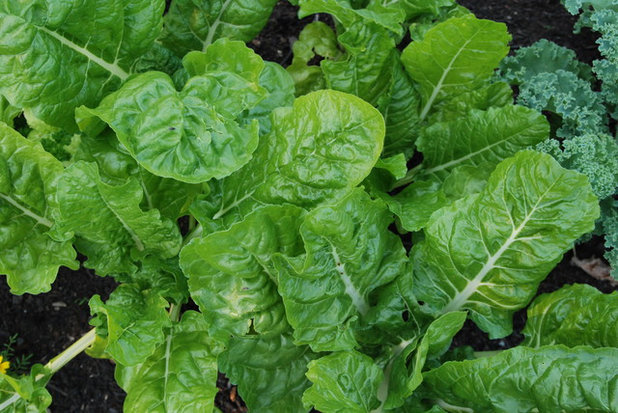
Paintbox Garden
Chard
(Beta vulgaris) is a cool-season annual that's ideal for growing in a cold frame. Follow germination directions on your seed packet and soak in warm water briefly before shaking out in loosely worked soil dressed with compost. Seeds take about 10 days to germinate.
One of the super foods rich in antioxidants and minerals, chard can be sown successively throughout the growing season, its leaves delicious chopped in soups or added to omelets. When harvesting, cut the outer leaves first. Baby chard seedlings are tender and sweet.
A Gourmet Greens Braising Mix from Renee's Garden contains 'Silverado' and 'Eldorado' chards with two kinds of beets — all meant to be thickly sown and harvested when 6 inches tall, then lightly sautéed.
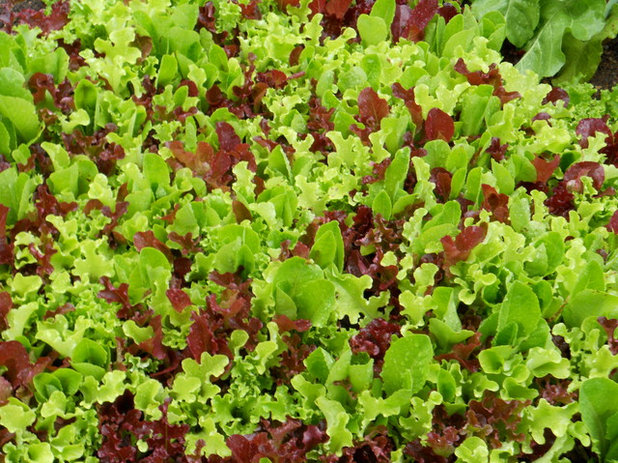
Paintbox Garden
Red and green
mesclun is another easy-to-grow health food; pull the seedlings when small and add to early spring salads. Plants can be thinned and then transplanted elsewhere in the garden.
Gardening TipsJust like a greenhouse or regular garden bed, a cold frame needs attention. Soil amendment, even hydration, proper ventilation, keeping plants labeled and re-seeding are all part of the fun.
If you have a frame that needs to be propped open manually and closed at the end of day, be careful not to forget as young plants left in an unopened cold frame can be killed by excessive heat on a warm day.
In August or early September, sow more cool-season edibles into your cold frame to extend the growing season, and keep the top propped open. (Closing it is only necessary when freezing temperatures hit.) Who knows, by Thanksgiving you could be cutting baby spinach for a gourmet salad.
More: How to Grow a Cool Season Vegetable Garden





